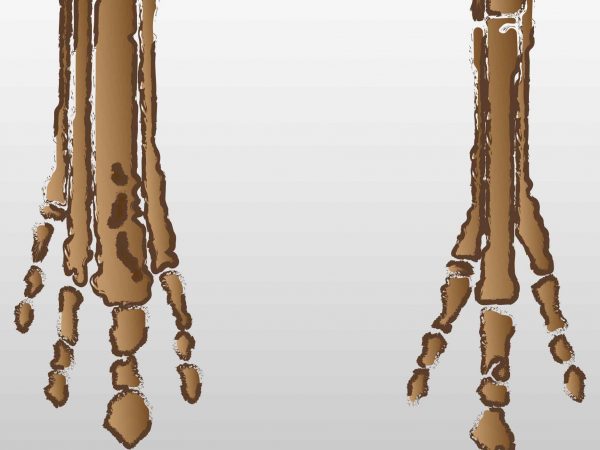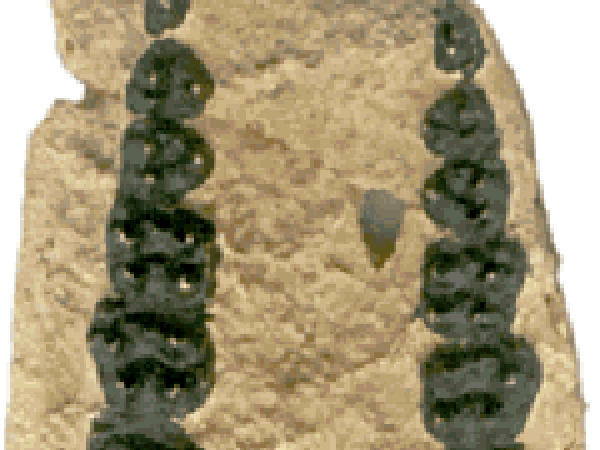This small dog-sized animal represents the oldest known horse. It had a primitive short face, with eye sockets in the middle and a short diastema — the space between the front teeth and the cheek teeth.
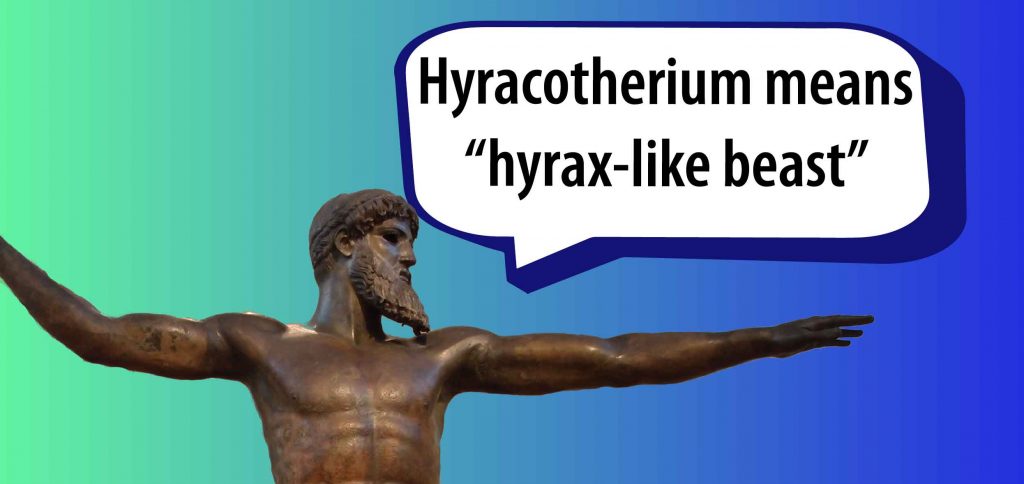
Although it has low-crowned teeth, we see the beginnings of the characteristic horse-like ridges on the molars. Hyracotherium is better known as “eohippus” – which means “the dawn horse.” (Don’t italicize eohippus or spell it with a capital E because it’s not a valid scientific name.) The name also refers to the fact that it lived during the Eocene.
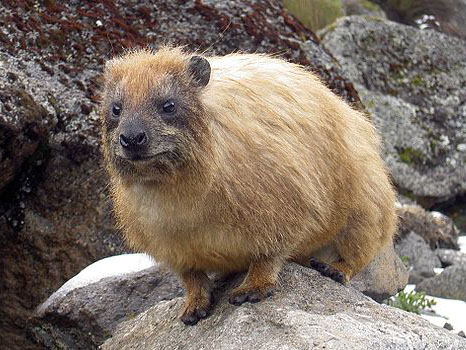
The hyrax, the cony, or “feeble-folk” of the Bible, live in Africa today. They look rodents but they are actually related to elephants and manatees.
Where & When?
Fossils of Hyracotherium are found at many Eocene localities in the western US and Europe. Species in this genus lived from around 55 million years ago to around 45 million years ago.
When those fossils were discovered, Hyracotherium was thought to be a monkey.
A MONKEY!?! Why?
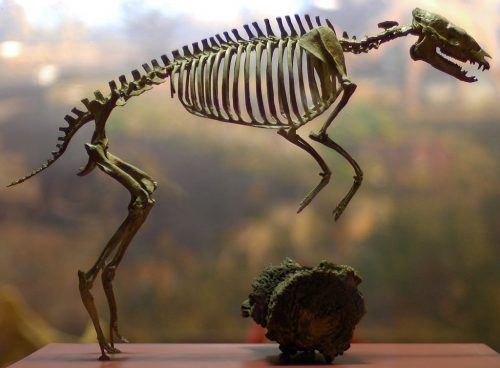
The teeth of these horses are quite primitive, like those of monkeys and other primates (e.g. humans!). The great 19th century British anatomist, Richard Owen, initially thought that this animal proved that primates once lived in England. He corrected his mistake after studying more specimens.
Hyracotherium is now believed to be a primitive horse, the earliest-known member of the family Equidae. It lived in both the Old World and in North America. Specimens found in the United States were initially given the name “eohippus” by O. Marsh in 1876.
Paleontologists later determined that eohippus was really the same genus as Hyracotherium and based on scientific procedure, the older name Hyracotherium (1840) takes precedence over, and includes, eohippus (1876).
The great science artist Charles Knight of the American Museum of Natural History reconstructed Hyracotherium with a striped coat because it was a browsing horse. Browsing animals we know today often have striped coats to camouflage them in the play of light and dark on the forest floor.
Some scientists believe that species of Hyracotherium are not only ancestral to the horse, but also to the horse’s other perissodactyl relatives like the rhinos, tapirs, and some interesting extinct animals. These extinct animals include the strange clawed chalicotheres, enormous horned titanotheres, and the “Beast of Baluchistan,” the largest land mammal that ever lived.
